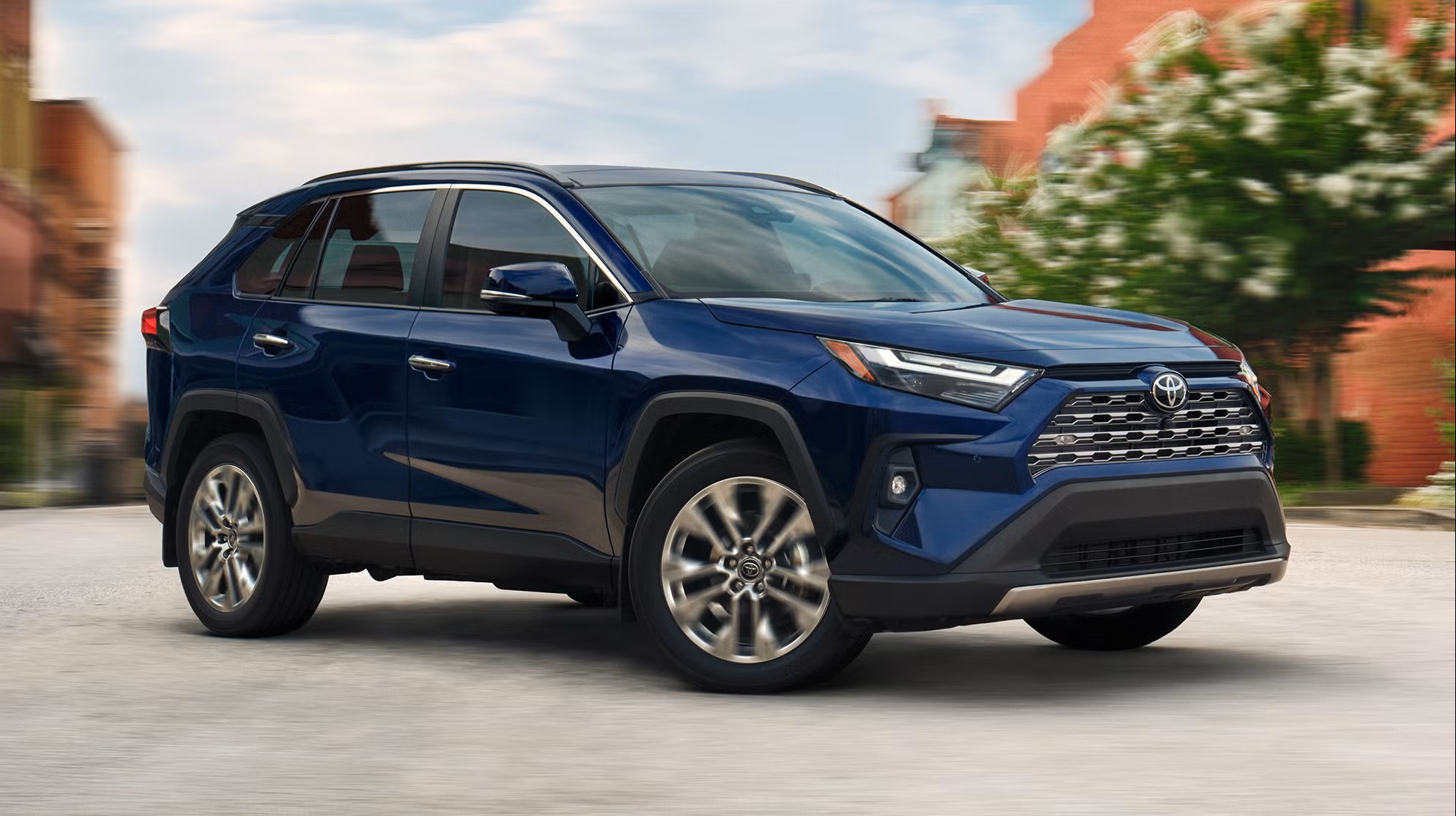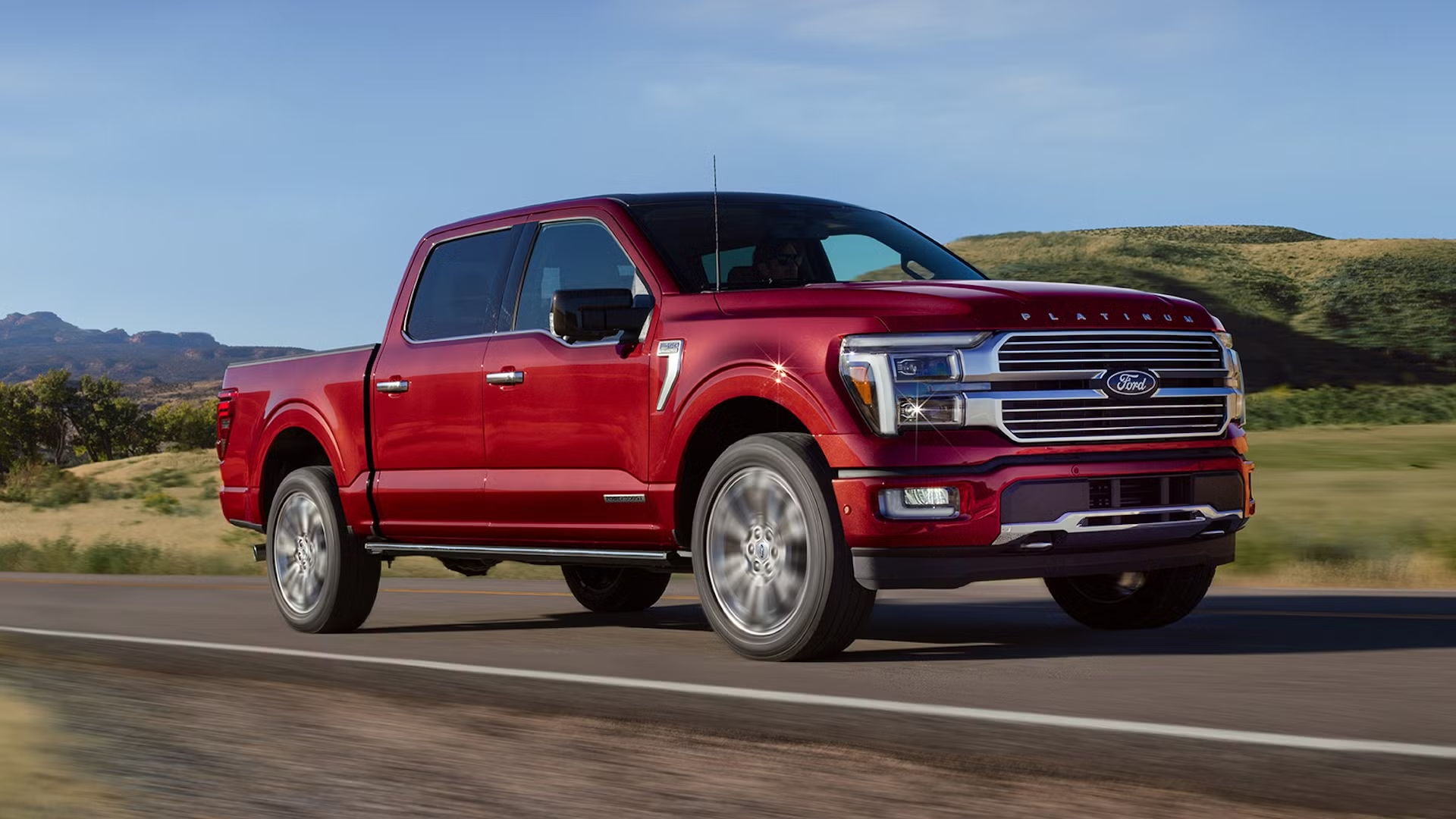Engine reliability is one of the most important aspects of vehicle ownership, especially for those who prioritize long-term value and minimal maintenance headaches. Among the most frustrating and costly issues drivers face is the persistent problem of oil leaks.
An engine that routinely seeps or spills oil not only leads to unsightly stains and constant top-offs but can also indicate deeper mechanical issues that compromise longevity.
Oil leaks can stem from poor design, subpar materials, or overly complex engine architecture—factors that tend to repeat across specific engine families.
However, it’s not all bad news. While some engines gain a reputation for being oil leakers, others are admired for their leak-resistant construction and stellar reliability over the long haul.
These engines exemplify thoughtful engineering, solid gaskets and seals, and accessible layouts that prevent premature wear and simplify maintenance.
In this article, we’ll highlight 5 engines notorious for oil leaks, explaining the causes, ownership implications, and patterns across production years.
Then, we’ll switch focus to 5 engines with a clean track record, known for staying dry under pressure even after years of use. Whether you’re shopping for a used car or just curious about engine durability, this guide will help you make a more informed decision.
Also Read: 5 Cars That Sell Fast on Facebook Marketplace and 5 That Stay Listed for Months
5 Engines With Notorious Oil Leaks
Oil leaks are more than just a nuisance—they’re a warning sign that something may be seriously wrong under the hood. While occasional drips can happen as a vehicle ages, certain engines are infamous for chronic oil leaks even at relatively low mileage.
These problematic engines tend to suffer from flawed gasket designs, inadequate sealing surfaces, or materials that degrade prematurely due to heat or vibration.
In many cases, these problems aren’t just one-off issues—they recur despite repairs, often costing owners hundreds or even thousands of dollars in labor-intensive maintenance.
This pattern of failure isn’t always visible on the spec sheet, nor is it widely advertised by manufacturers. However, owner reports, mechanic testimonials, and recall data have helped spotlight the engines that routinely exhibit these shortcomings.
Some of these engines come from manufacturers with otherwise stellar reputations, proving that even industry leaders can produce a dud. The issue often boils down to engineering oversights or cost-cutting decisions that manifest as long-term reliability headaches.
In this section, we’ll explore five engines known for developing oil leaks at an alarming rate. Each entry will detail the specific failure points—whether it’s valve cover gaskets, rear main seals, timing covers, or even plastic components that warp under stress.
We’ll also cover the financial and mechanical consequences, as well as the specific vehicle models most affected.
This isn’t just a list of engines to avoid—it’s a look into how engine design impacts real-world ownership and the lessons that can be learned when reliability takes a backseat to packaging or cost efficiency.
Let’s begin with the engines that earned their reputation the hard way—through repeated trips to the repair shop and puddles on the driveway.
1. BMW N54 Inline-6 Engine (2006–2016)
BMW’s N54 3.0-liter twin-turbocharged inline-six earned praise for its performance and tuning potential, but its reputation for oil leaks is just as well known—perhaps more so among frustrated owners.
Found in models like the 335i, 135i, and early 740i, the N54 suffers from multiple oil leak hotspots that plague ownership costs and reliability.
The most common source of leaks in the N54 is the valve cover gasket, which typically starts seeping oil at around 60,000 to 80,000 miles. The plastic valve cover itself is prone to cracking under heat and stress, which exacerbates the problem.
Leaks often drip directly onto the hot exhaust manifold, creating smoke and a noticeable burning oil smell. This isn’t just annoying—it can be dangerous if it escalates into engine bay fires.

Additionally, the oil filter housing gasket is a frequent failure point. It’s located near the serpentine belt system, and when it leaks, oil can contaminate the belt, causing slippage or eventual belt failure.
Replacing this gasket is labor-intensive, pushing repair costs well into the hundreds. The oil pan gasket is yet another sore spot, and replacing it often requires engine support or removal of the subframe, making what should be a simple job into a workshop ordeal.
BMW tried to rectify some of these issues in the successor N55 engine, but many of the same design themes—tight packaging, plastic components, and high under-hood temperatures—remained. As a result, even later BMW turbo inline-sixes retained a reputation for oil leaks, though not as severely as the N54.
For potential buyers, the N54’s oil leak problems make it a risky choice if maintenance records are missing or vague. Enthusiasts still prize it for performance, but they often accept the tradeoff of constant gasket replacements and oil top-offs.
If you’re considering a used BMW with this engine, factor in these leak-prone areas when budgeting for long-term ownership.
2. Subaru EJ25 Boxer Engine (1996–2010)
The Subaru EJ25 2.5-liter flat-four engine is well-known among mechanics and owners—not only for its unique horizontally opposed layout but also for its persistent oil leak issues.
Found in vehicles like the Subaru Outback, Forester, Legacy, and Impreza during the late 1990s through early 2010s, the EJ25’s design led to widespread gasket and seal failures that became nearly synonymous with the brand’s reputation.
One of the primary weaknesses lies in the head gaskets, especially in early Phase I and Phase II variants.
While these failures are more famous for causing coolant loss, they often allow engine oil to seep externally, resulting in noticeable drips onto the exhaust system or driveway.
The valve cover gaskets, mounted laterally due to the boxer layout, are also notoriously prone to leaking, especially as the rubber seals age and become brittle.
Accessing and replacing these gaskets is more difficult than in conventional inline or V-style engines. The boxer configuration means even routine gasket changes can become time-consuming, requiring the removal of multiple components just to reach the affected areas.

Add to that the relatively high operating temperature and cramped engine bay, and the leaks become an ongoing maintenance concern.
Even when repaired, some EJ25 engines see recurring leaks within 40,000 to 60,000 miles, which contributes to an elevated cost of ownership.
Subaru eventually improved sealing materials in later versions and redesigned the gasket materials from composite to MLS (multi-layer steel), but the earlier iterations remain notorious.
The EJ25 is otherwise a durable engine when maintained properly, but for drivers unfamiliar with boxer-specific quirks, persistent leaks can be frustrating.
Used buyers should ensure any Subaru with this engine has documented gasket replacements, ideally with improved materials, or be prepared to face the inevitable oil spots under the car.
3. Land Rover 5.0L AJ133 V8 Engine (2010–2016)
When Land Rover introduced its in-house developed 5.0L AJ133 V8 engine, it aimed to replace aging Jaguar-sourced designs with something more powerful and modern.
However, this engine—used in models such as the Range Rover, Range Rover Sport, and LR4—quickly gained a reputation for serious oil leak problems, particularly due to flawed sealing components.
The most frequent leak point is the front timing cover, which uses a thin gasket that tends to fail prematurely. When this happens, oil begins to seep along the front of the engine block and may eventually drip onto suspension components or the ground.
Compounding the issue is the complexity of the engine bay—repair access is notoriously limited, often requiring extensive labor to complete relatively simple gasket jobs.

Another common culprit is the rear main seal, which can leak oil into the bellhousing area. Since this seal is located between the engine and transmission, fixing it requires significant disassembly, often involving engine hoisting or partial drivetrain removal.
The valve cover gaskets are also frequent leak points, and the placement of these covers in a tight V-shaped layout makes even basic repairs feel like engine surgery.
What makes the situation worse is that these leaks often emerge early in the engine’s lifespan—some owners report visible leaks before 70,000 miles. Because this engine powers premium vehicles, repair costs can be disproportionately high, and warranty expiration only worsens the financial burden.
Land Rover updated gasket materials over time, but early models remain problematic. For prospective buyers or current owners, comprehensive service records showing these gaskets have been proactively replaced are essential. Without them, the AJ133 V8 poses a long-term risk for repeated leaks and wallet-draining repairs.
4. Chrysler 3.6L Pentastar V6 (Early Years: 2011–2014)
Chrysler’s 3.6L Pentastar V6, introduced in 2011, was designed to modernize the brand’s engine lineup. It powers a wide range of vehicles from the Dodge Charger and Jeep Grand Cherokee to the Chrysler 300 and Ram 1500.
Although later versions proved more reliable, early production models (especially 2011–2014) suffered from several design flaws, including frequent oil leaks.
One of the most prominent issues stemmed from the oil filter housing, which was originally manufactured from plastic. The housing is mounted between the engine banks in a high-temperature area.
Over time, heat causes the plastic to warp, crack, or degrade—resulting in significant oil leakage that can spread across the engine valley and drip down the rear of the engine.

This issue became so prevalent that Chrysler issued technical service bulletins (TSBs), and the aftermarket quickly began offering aluminum replacement units.
However, replacing the plastic housing is not easy—it requires intake manifold removal, and even then, careful cleanup is needed to avoid lingering oil deposits. Many owners and shops report repeated failures even after replacement, unless upgraded aluminum housings are used.
Another weak point is the valve cover gaskets, which tend to harden prematurely. Combined with high engine temperatures and variable maintenance practices, leaks become inevitable for many owners, often before the 100,000-mile mark.
Chrysler improved the design after 2014 by switching to more robust materials and updating torque specs.
However, those early Pentastar engines have left a sour taste for many due to constant seepage and oil top-offs. The engine itself is otherwise strong and efficient, but the oil leak problems hurt its long-term value and reputation.
5. Audi 2.0T TFSI (2009–2013, EA888 Gen 2)
The second-generation EA888 2.0T engine from Audi and Volkswagen is widely used in vehicles like the Audi A4, A5, Q5, and VW GTI.
It’s celebrated for performance and tuning potential, but Gen 2 versions (roughly 2009 to 2013) are frequently cited for oil leak issues stemming from multiple components.
A top offender is the rear main seal, which is a thin rubberized seal mounted between the engine and transmission.
The Gen 2 design often fails under heat and crankcase pressure, causing leaks that can appear deceptively small yet lead to significant oil loss over time. Since replacement requires removal of the transmission, this is one of the costliest leaks to address.
Another major issue is the crankcase ventilation system (PCV valve), which, when faulty, causes excessive internal pressure that forces oil past seals. Leaks often begin as minor weeps but worsen quickly if the PCV issue is left unresolved.

The camshaft bridge—a specialized piece with integrated sealing channels—also frequently leaks. It’s located under the valve cover, and when it fails, it seeps oil into the spark plug wells or down the engine block.
Diagnosing this takes skill and labor, meaning some leaks go undetected or misdiagnosed until they’ve caused other damage.
While Audi improved sealing in later Gen 3 versions, Gen 2 EA888 engines have left a trail of complaints and costly repairs.
Owners are often advised to monitor oil levels closely and address even minor leaks early. While not a deal-breaker for performance enthusiasts, the leak history makes this engine less appealing to those prioritizing low maintenance and long-term reliability.
5 Engines With Clean Track Records
While some engines struggle with persistent oil leaks, others stand out for their impressive track records of long-term durability and clean operation.
These engines may not grab headlines for groundbreaking innovation, but their design integrity, thoughtful engineering, and quality manufacturing contribute to something far more valuable to owners: peace of mind.
A leak-free engine means less time under the hood, fewer trips to the mechanic, and a much lower risk of damage to critical components.
In an era where turbocharging, downsizing, and cost-cutting have increased mechanical complexity, engines that remain dry after 100,000 miles or more are increasingly rare. Yet they exist—and they consistently earn praise from mechanics, long-term owners, and fleet operators alike.
These engines feature high-quality gasket materials, straightforward layouts that avoid unnecessary stress points, and proven configurations that emphasize longevity over marketing gimmicks.
In this section, we highlight five engines with clean oil sealing records, known for staying dry even as they accumulate mileage. These aren’t just engines that “don’t leak much”—they’re engines that rarely develop leaks at all when properly maintained.
They span a variety of manufacturers and vehicle types, from Japanese sedans to American pickups, showcasing that reliability isn’t limited to one brand or region.
Each entry will explore why the engine is so well-regarded in this area, how its design contributes to long-term cleanliness, and what types of vehicles you’ll find it in.
For anyone who prioritizes low-maintenance, leak-free ownership—whether you’re a daily commuter or a weekend adventurer—these engines offer a proven formula for dependable performance without the mess.
1. Toyota 2.5L A25A-FKS Inline-4 (2018–Present)
Toyota’s A25A-FKS 2.5-liter inline-four engine, part of the Dynamic Force family, is a standout example of engineering built for both performance and long-term durability.
Used in vehicles like the Toyota Camry, RAV4, Highlander, and Lexus NX, this engine has quickly earned a reputation not only for excellent fuel efficiency and refined performance—but also for exceptionally clean oil sealing.
What sets the A25A-FKS apart is Toyota’s meticulous approach to gasket design and thermal management. The valve cover gasket and timing cover seal, two common failure points in many engines, are crafted using high-grade silicone materials and reinforced with smart torque specs to reduce warping.
Additionally, the engine block and head mating surfaces are manufactured to tight tolerances, minimizing the chance of seal creep over time.
Because Toyota designs its powertrains with global longevity in mind, they build in allowances for heat cycling, varying maintenance standards, and wide operating temperature ranges.

The A25A-FKS uses a composite oil pan with effective vibration damping and a high-integrity gasket channel that virtually eliminates seepage. In fleet service and long-term ownership scenarios, these components show little to no leakage even at 100,000 miles or more.
Another major advantage is the engine’s simple layout. Without turbochargers, extra plumbing, or excessive packaging pressure, the components aren’t cramped or strained. This allows for better heat dissipation and easy maintenance—two factors that greatly reduce stress on gaskets and seals.
Mechanics frequently cite the A25A-FKS as one of the “cleanest” engines they see in modern vehicles. It’s not just clean on paper—it stays clean under real-world conditions, making it a top pick for owners who don’t want to deal with oil leaks or expensive undercarriage grime.
For buyers seeking reliability and minimal engine-related hassle, this Toyota engine delivers a rare combination of advanced technology and old-school dependability—with barely a drip in sight.
2. Honda K24 Engine (All Variants, Especially K24A & K24W)
Honda’s K24 family of engines is a legendary chapter in automotive reliability—and it earns its spot here not just for performance, but for how exceptionally well it resists oil leaks over time.
Used in everything from the Honda Accord, CR-V, and Element to sporty Civics and Acuras, the K24 series blends durability, efficiency, and robust build quality into one of the most admired four-cylinder platforms in the industry.
Key to the K24’s cleanliness is its aluminum block and head pairing, which ensures minimal warping and excellent gasket mating. The valve cover gaskets are mounted high and easy to access, but rarely fail before 150,000 miles unless subjected to extreme neglect.
More importantly, Honda’s gasket materials—especially post-2003—are known for withstanding both thermal cycles and oil exposure better than most.
The engine also benefits from a timing chain system, eliminating the need for a gasketed timing belt cover. This reduces one major leak risk area.
Additionally, the K24 was designed with longevity in mind: oil passages, PCV systems, and sealing channels are oversized and well-drained, which limits internal pressure that might otherwise cause leaks in worn engines.

Even in high-mileage examples, it’s not uncommon to pull the valve cover and find everything dry and clean—a testament to both Honda’s engineering and its manufacturing consistency. Shops frequently note that even well-worn K24s don’t show the grime buildup typically associated with similar engines of the same age.
For owners, this translates to lower maintenance costs and less worry. It’s also a favorite among enthusiasts who build high-horsepower variants without sacrificing reliability. Whether you’re driving a family crossover or a track-modified coupe, the K24 delivers dependable power without bleeding oil across your driveway.
3. Ford 2.7L EcoBoost V6 (Second Gen: 2018–Present)
While early EcoBoost engines received mixed reviews for maintenance concerns, Ford’s second-generation 2.7L EcoBoost V6 has quietly become one of the company’s most leak-resistant and low-maintenance turbocharged engines.
Found in the Ford F-150, Edge ST, Bronco, and Lincoln Nautilus, the Gen 2 version of this twin-turbo V6 shows remarkable sealing integrity, even under high-load and high-mileage conditions.
A major reason behind its clean track record is Ford’s decision to completely redesign the engine block and heads. The aluminum block features an integrated closed-deck design, which enhances structural rigidity and prevents flexing—a common cause of gasket failure in high-pressure engines.
Ford also improved the valve cover gasket materials and adopted stronger fastener torque specs across the head and accessory mounting points.
The engine’s PCV system and crankcase ventilation routing are especially well-calibrated, minimizing blow-by and internal pressure that could otherwise force oil past seals. This is a significant achievement given that it’s a direct-injected, twin-turbo setup—conditions that are typically challenging for long-term oil retention.

Additionally, Ford relocated several high-heat components and introduced a more robust oil pan gasket design using molded rubber integrated with a steel backbone. This improved oil containment even during aggressive driving or off-road articulation.
Owners and fleet managers report that even at 100,000+ miles, these engines often remain bone-dry externally. Mechanics also cite them as clean and easy to work on, thanks to minimal seepage and excellent component access.
This engine is a strong argument that a high-tech, turbocharged engine doesn’t have to mean high-maintenance.
The 2.7L EcoBoost proves that smart engineering and thoughtful revisions can create a powerplant that delivers strong performance without the drips and grime typically associated with forced induction.
4. General Motors 5.3L V8 Vortec (Gen IV: 2010–2014 LC9/LMF Variants)
Among truck and SUV engines, few have earned more praise for long-term cleanliness and reliability than GM’s 5.3L V8 Vortec—specifically the Gen IV LC9 and LMF variants found in the Chevy Silverado, GMC Sierra, Tahoe, and Suburban from around 2010 to 2014.
These engines balance classic small-block architecture with modern enhancements that make them both powerful and impressively leak-resistant.
A key reason for their cleanliness lies in excellent gasket design and block/head compatibility. GM used upgraded valve cover and oil pan gaskets that resisted shrinking and hardening over time. The LS-family’s pushrod design also reduces the number of high-pressure oil pathways external to the block, minimizing opportunities for leaks.
Additionally, these engines benefited from revised PCV systems and low-pressure oiling designs that place minimal stress on seals and gaskets, even under heavy towing conditions.
Unlike some earlier Vortec engines, these versions largely avoided the infamous rear main seal leaks and timing cover seepage that plagued older GM small blocks.

Routine maintenance is simple, and access to components like valve covers and the oil pan is straightforward in most truck applications. This allows preventative service to be done without disturbing seals or creating new problems—a key reason these engines age gracefully.
It’s not uncommon for owners to report clean, bone-dry oil pans even after 200,000 miles, especially in fleet vehicles with consistent maintenance. The 5.3L V8 remains one of the most trusted truck engines, and its reputation for staying leak-free only adds to its desirability in the used market.
If you want a powerful yet low-hassle engine for a full-size truck or SUV, the 5.3L Gen IV Vortec is a proven workhorse that keeps the pavement underneath your vehicle spotless.
5. Mazda Skyactiv-G 2.0L/2.5L Inline-4 (2012–Present)
Mazda’s Skyactiv-G engines, specifically the 2.0L and 2.5L inline-fours used in models like the Mazda3, Mazda6, CX-5, and CX-50, have earned a reputation not just for fuel economy and lively performance—but also for exceptionally clean and tight engine construction.
In an industry where oil leaks remain a chronic issue, Mazda’s naturally aspirated Skyactiv-G engines stand out for their near-complete absence of long-term seepage.
Part of this success comes from Mazda’s commitment to minimalist, efficient design. The Skyactiv-G engine block uses a high-strength aluminum construction with very tight tolerance controls. Combined with well-designed gasket channels, this ensures a secure seal across the head, valve cover, and oil pan.
Additionally, these engines operate at relatively low internal pressures compared to turbocharged alternatives.
This reduces the strain on seals and minimizes oil blow-by through the PCV system, resulting in a cleaner-running engine over time. Even the rear main seal, a common trouble spot for many engines, has shown excellent durability in long-term ownership reports.

Mazda also excels in thermal efficiency, allowing the engine to warm up quickly without excessive heat cycling. This helps extend the life of gasket materials and reduces chances of expansion-contraction related failures.
Independent repair shops frequently report seeing 100,000–150,000-mile Skyactiv engines with virtually no oil leaks, even in older vehicles. There’s also little grime buildup around timing covers or oil pans, which speaks to both the initial build quality and the engine’s ability to hold its oil where it belongs.
For drivers who prioritize long-term reliability with minimal hassle, the Skyactiv-G is a fantastic choice. It provides excellent real-world fuel economy, respectable power, and an almost unparalleled record of staying dry, clean, and efficient.
Oil leaks might seem like a small nuisance at first—a few drops on the driveway or a faint burnt oil smell after a drive. But over time, they become more than an inconvenience.
Leaky engines can lead to damaged gaskets, failed emissions tests, electrical issues, and even engine fires in extreme cases. That’s why understanding which engines are prone to leaks—and which ones stay sealed—is more than just technical trivia. It’s essential knowledge for buyers, owners, and mechanics alike.
In the first part of this article, we explored five engines with notorious oil leak reputations, from Subaru’s flat-four to BMW’s turbocharged inline-six.
Whether it’s due to poor gasket material, heat-related stress, or complex packaging that traps pressure, these engines demand extra vigilance.
While some can be managed with timely repairs, others bring persistent issues that affect long-term reliability and cost of ownership. Knowing these pain points up front helps consumers either plan accordingly or choose a more dependable alternative.
By contrast, the engines in the second half—like Toyota’s A25A, Honda’s K24, and Mazda’s Skyactiv-G—demonstrate what’s possible when manufacturers prioritize quality sealing, smart layout, and thermal stability.
These engines have earned reputations for remaining leak-free deep into six-figure mileage territory. Their clean track records mean less maintenance stress, better resale value, and fewer surprises over the years.
Ultimately, engine cleanliness isn’t just about aesthetic pride. It affects safety, reliability, repair costs, and even environmental impact. When choosing your next vehicle, or evaluating the condition of your current one, don’t overlook the importance of a well-sealed engine.
Leaks may be common, but they’re not inevitable. With the right engine under the hood, you can enjoy thousands of miles without worrying about that telltale oil stain forming beneath your car. And in the long run, that peace of mind is worth its weight in clean, contained motor oil.
Also Read: 5 Cars That Make Your Daily Commute Comfortable and 5 That Hurt Your Back

